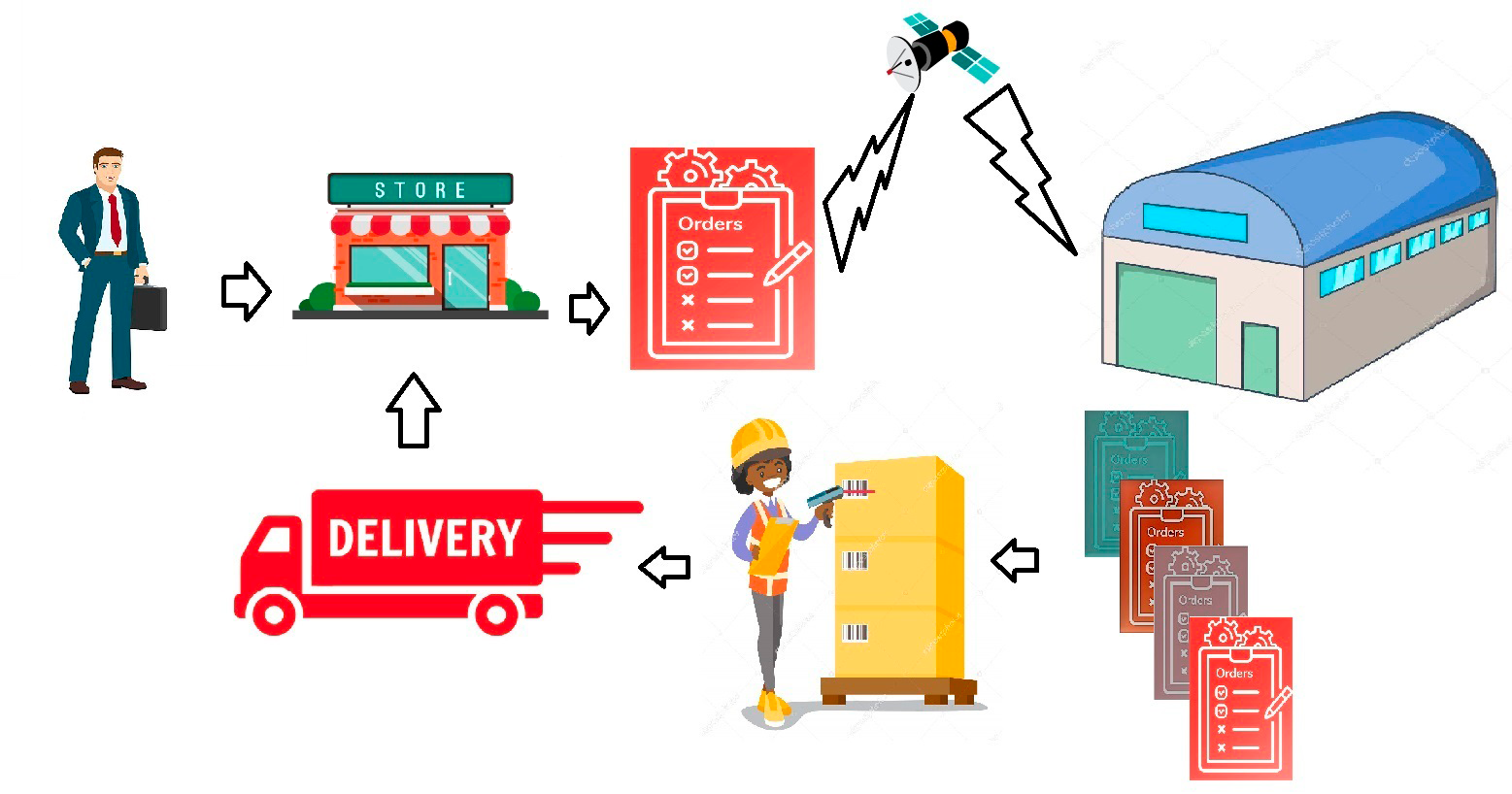Logistics – Warehouse


Orders can arrive via email or from the appropriate presale program on
android tablet.
For each order you must enter: customer code, delivery date, any notes for the
store. Within each order, you must enter the quantity by number and the
price per kg or in sales units. The reason: sale, merchandise discount, gift.
Once the orders have been entered, they will be available on the warehouse terminals connected in
wi-fi with the central computer. The order list on the warehouse terminal is sorted
by delivery date.
The warehouse worker through the warehouse terminal opens an order and completes each line
details with: Lot, Qty in pieces, Qty in kg. The data can be typed
manually but for the most part read via the barcode reader. The
warehouse worker has no possibility to intervene on the price. If an order line has two
lots exists the split function and the price is copied from the main line. Codes a
bars on the products must all be ean128 with an indication of the 14-digit code qta
3 integers + 3 decimals and lot. The warehouse worker must complete all the lines included
those cut for lack of goods by putting 0 in the qta. Once completed
the order the warehouse worker has the possibility to definitively confirm the order e
generate inventory movements.
There is the de-evasion function that allows you to cancel the movements of
warehouse and restore the balances, review and modify the order and the quantities entered.
The warehouse terminals can be more than one and each one can operate
simultaneously on different orders. If you try to open the same order out of two
terminals at the same time on one will be notified that the order is already
open on another terminal.
Function to extract the movements to be passed to the management system, once the i
inventory movements are reported as already transmitted and will no longer be
orders can be canceled. The data transmitted to the management system are: customer, product, qta
in pieces, qty in kg, reason, price in uv, order reference number, reference date
order, lot, expiry date, agent, consignee)
At the end of the day it is possible to print the border of all deliveries.
Data import from external management this function imports the data of customers and of
produced by king in order to operate with the same encodings.
Completion of product data:
– 14 digit ean code each item must be completed with the ean code for this function
it is necessary to transcode the ean128 code into your article code.
– location (A- outside cell F- refrigerator, others can also be provided
locations) Orders will be sorted on screen by location and item code in
so you can see the out-of-cell articles first and then the in-cell articles instead of all
mixed.
– standard weight to indicate that a product is by weight the standard weight is indicated
– pieces per carton, if a product is a number, a reading directly loads n pieces
Order entry to supplier (automatic calculation based on orders received)
Vendor price control and invoice amount control calculation.
Transmission of orders in EDI format to the supplier
Receipt of goods (the order is converted into a bill of entry)
Import of documents from standard TV and PV (Request of goods, returns, additions.
Orders)
Inventory adjustments (Manual or with automatic batch inversion function)
Inventory (inventory posting to date)
Prints (sales statistics in various formats by customer or item from date to date,
stocks in various formats by location, with batch or condensed)
Warehouse management module
– Order entry to supplier (automatic calculation based on orders received)
Vendor price control and invoice amount control calculation.
– Transmission of orders in EDI format to the supplier
– Receipt of goods (the order is converted into an entry note)
– Receipt of delivery notes from the supplier who makes them available via the web
– Confirmation, bill correction and label printing (performs the movements of
warehouse, label printing with ean128 batch)
– Transmission of corrections to the supplier.
– Import of documents from dacom standard TV (Request for goods, returns,
additions. Orders)
– Entry of goods orders for TV terminals and customer orders
– Order summary by item
– Control and correction of returns acquired from the attempted sale
– Evasion of loads from tv (theoretical evasion based on warehouse balances)
– Load transmission (cari.dat transmission in dacom standard tv format)
– Inventory adjustments (Manual or with automatic batch inversion function)
– Inventory (inventory entry to date)
– Print stamped register for batch handling
– Personal data management (customers, products, consignees, supplier lists)
– Prints (sales statistics in various formats by customer or article from date to
date, stocks in various formats by location, with batch or condensed)
Order management module
– Matching of orders to delivery rounds
– check print (stock, traveling, tidy, cut 1, cut2)
– ventilation
– single order fulfillment based on stock
– bulk order preparation and fulfillment based on stock
– evasion
– completion of variable weight products
– print cuts
– DDT printing for transfer to peripheral offices
– borderò deliveries
– message entry
– Recalculation of products by consignee excluding large-scale distribution
